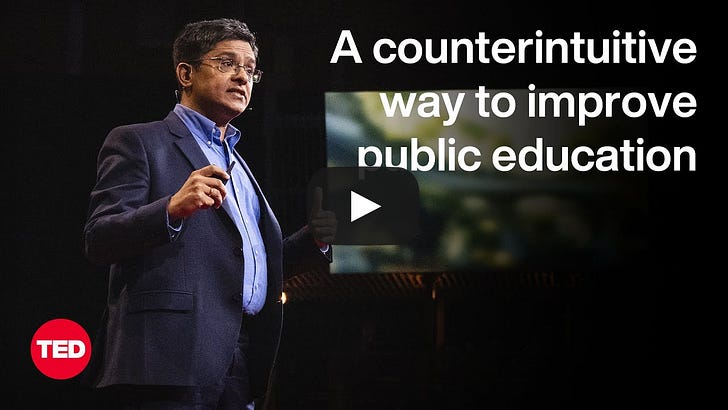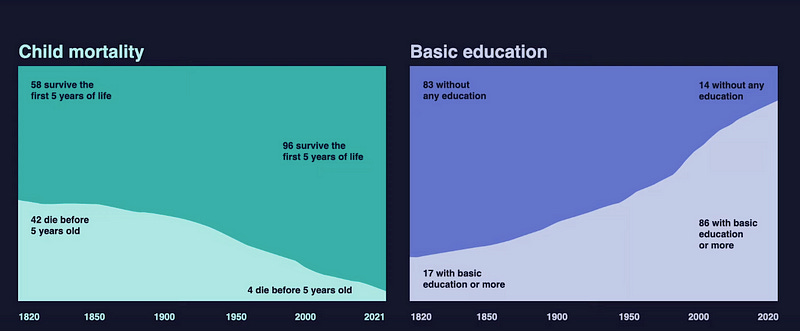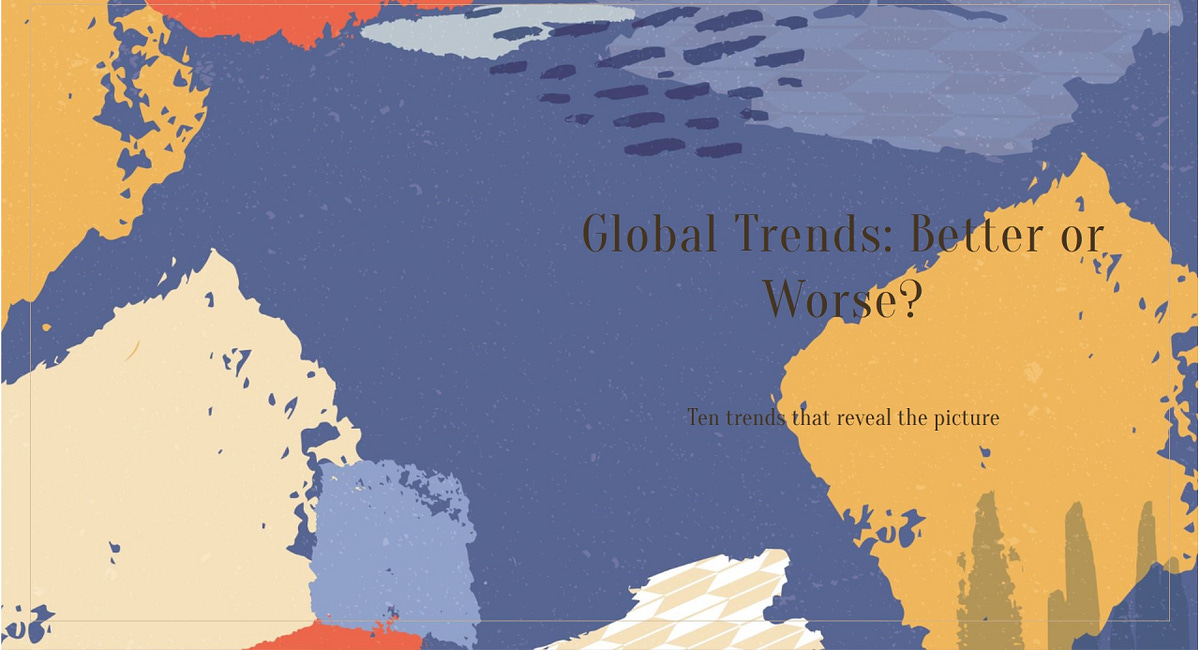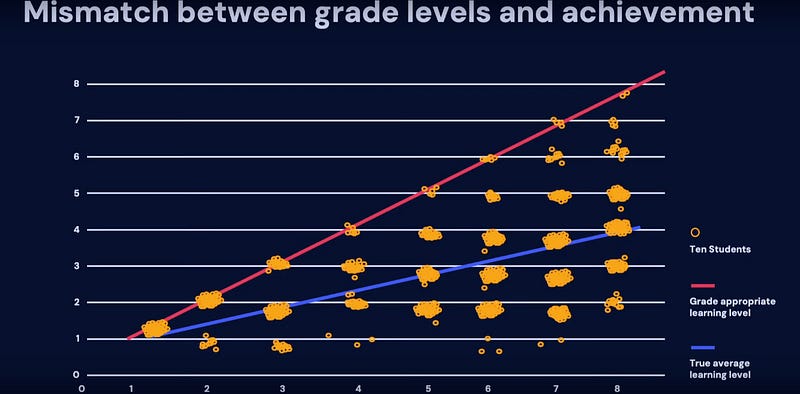Fixing The Global Education Crisis — Here’s What We Can DoUnderstanding the global education crisis & ways governments can address it by spending more efficientlyWelcome to Light Years by Gaurav Krishnan!Gaurav Krishnan recently moved you from another platform to Light Years by Gaurav Krishnan, hosted on Substack. New posts will be automatically delivered to you via email or via the Substack app. When it comes to global development, governments usually spend a sizeable chunk of their budgets on education, but we’re not seeing it translate into results. Child mortality is lower and school enrollment is much higher today than at any point of time in human history, as represented in the graph below. In an old article (linked below), I explored the economic factors that answered the question: Is the world getting better or worse? However, despite the points mentioned in that article, according to economist Karthik Muralidharan, we’re seeing a global education crisis.
This disparity between the number of enrolled children & the lack of learning proficiency is further impacting the global economy, especially for developing nations in the long run, argues Muralidharan.
The Data & InsightsThe common solution most governments use to address this issue is to spend more money on education. However, Muralidharan argues that governments should spend more efficiently rather than just substationally.
The figure below shows the learning outcomes of students based on a study Muralidharan & his team conducted in India. The sample size comprised over 6000 students. The x-axis represents the grade in which the student is enrolled while the y-axis represents the level of learning. Each dot comprises a group of ten students. As per the study, students aren’t performing as expected. The red line represents the median of how students should be ideally performing according to their respective grades. But in actuality, the average learning level, represented by the blue line, is half of the ideal rate. What this means is that your average eighth-grade kid in a public school in India has about a fourth-grade level of understanding of mathematics. How do teachers react to this disparity currently?
Muralidharan interrupts his speech and switches to speaking in Hindi, giving the predominantly English-speaking audience a glimpse of what it’s like for children in developing countries who are unable to comprehend what they are being taught.
And so hiring more proficient teachers or increasing their wages isn’t the answer.
Using Technology To Create Tailor-Made & Focussed LearningTechnology can be a pivotal & game-changing tool to improve students’ learning outcomes. But this isn’t just about dishing out laptops. In their study, Muralidharan & his team used hyper-focussed software to create personalised learning experiences for students & the results were staggering.
Technology Isn’t Going To Replace TeachersA lot of scarecrows out there might suggest that technology & AI could replace teachers entirely. But that’s not true. Here’s why... In Muralidharan’s tests, they handed a sample size of students free laptops to use at home away from school even with Mindspark loaded. However, they found that the students barely used them, resulting in an almost zero use rate amongst the entire sample size.
This calls for technology to be used alongside current teaching methods. Furthermore, it requires teachers and technology to work in tandem with each other & not separately. By using software that’s personalised according to each child’s aptitude aided by a teacher who knows the child & can monitor& oversee his/her progress, we can see a huge shift in learning outcomes improving. Low Tech & LocalUsing technology isn’t the only way to improve learning outcomes. Sometimes low tech can be the way forward as well. As Muralidharan suggests, hand-holding children in after-school classes can also help the students grasp & learn more efficiently.
This calls for more innovation. Companies like the NGO Rocket Learning are using WhatsApp as a means of reaching students in remote parts of India. This can be further improved by using tech to create tailor-made specialised software that can teach students at their respective levels. Furthermore, teacher visits to the students’ houses & vice-versa, reward-based personalised learning, and software that can enable soft skill development away from the regular curriculum are just some other things that could be implemented. But the crux is that there’s room for innovation. The Free LunchWhile cheekily referring to himself as a bad economist for suggesting that there’s a free lunch on the cards, Muralidharan reasserts that despite seeming otherwise, the free lunch is, in fact, true. Simply put, governments don’t have to spend extra away from their current budgets for education, they only need to spend it smarter & more efficiently, making it an evident free lunch. However, Muralidharan understands that working with governments is difficult.
In the current uncertain global climate, Muralidharan urges that education development globally mustn't be stunted by economic shifts & uncertainties. Furthermore, governments need to realise that they need only to spend more effectively & efficiently instead of more.
In his eye-opening TED Talk, economist Karthik Muralidharan explores the current global education crisis by highlighting case studies from India & raises awareness about the disparity between government spending & learning outcomes. Muralidharan argues that there’s a ‘free lunch’ on the table & governments should just spend their budgets with greater efficiency. Subsequently, he envisions that this can go a long way in solving the global learning crisis in developing countries all over the world.  This article originally appeared on my LinkedIN newsletter ‘WithYourSound You Kill The Inc.’ Thank you for being a valuable subscriber to my newsletter Light Years! If you liked this post & found it informative, feel free to share this publication with your network by clicking the button below… I hope you found this post informative & it helped you in some way. As always, feel free to subscribe to my publication Light Years & support it & also share it if you’d like. Get it in your inbox by filling up the space below! You can find me on Medium on my Medium profile if you’re a Medium member covering a plethora of topics (there’s a bit of difference between the posts here & on Medium): https://medium.com/@gaurav_krishnan You can also find my LinkedIN newsletter “With Your Sound You Kill The Inc.” for more business-related articles & alternative takes but those that challenge the corporate norm. Subscribe on LinkedIn below: WithYourSound You Kill The Inc | LinkedIn If you’d like to thank me for this post, if you found value in it, you can buy me a coffee instead of, or alongside subscribing to my publications, by scanning the QR code below so that I can sip my next brew of coffee, all thanks to you! :) You're currently a free subscriber to Light Years by Gaurav Krishnan. For the full experience, upgrade your subscription. |
Friday, 7 February 2025
Fixing The Global Education Crisis — Here’s What We Can Do
Subscribe to:
Post Comments (Atom)
Plan to Win! Fresh Manna by Pastor Tim Burt
Fresh Manna with Pastor Tim Burt A Note from Pastor Tim Tim here. I'm so glad you...

-
Fresh Manna with Pastor Tim Burt A Note from Pastor Tim Tim here. I'm so glad you...





No comments:
Post a Comment